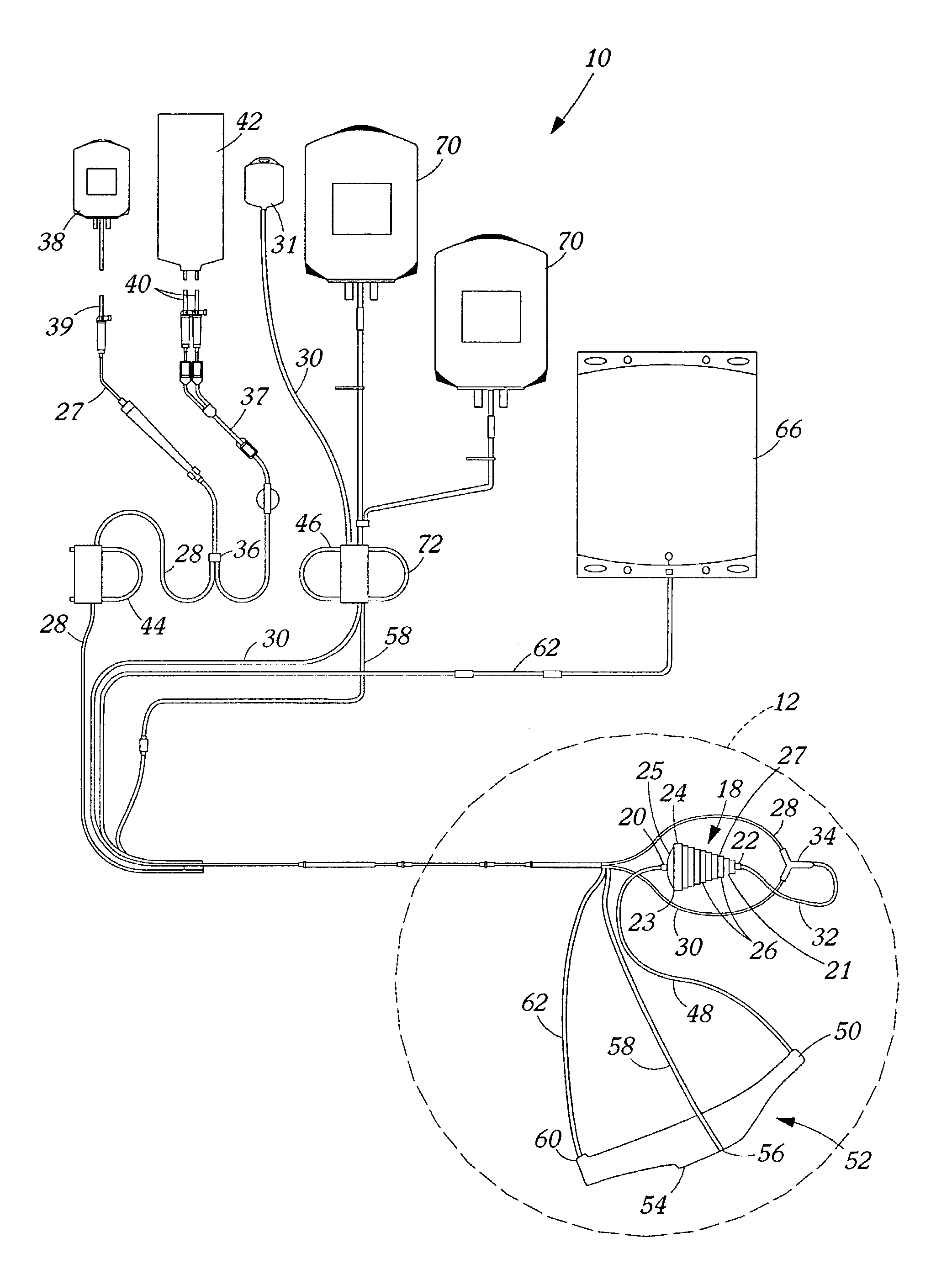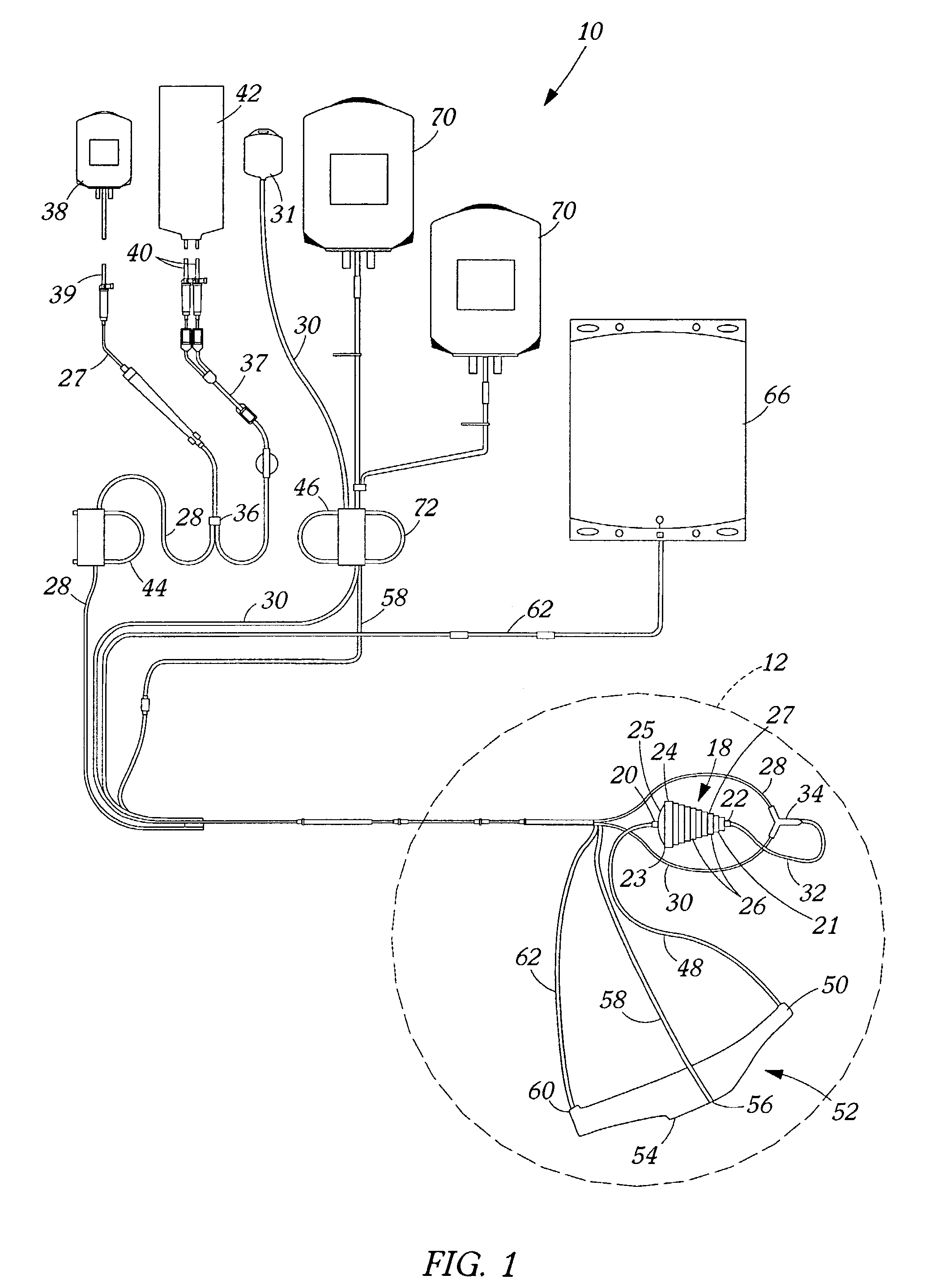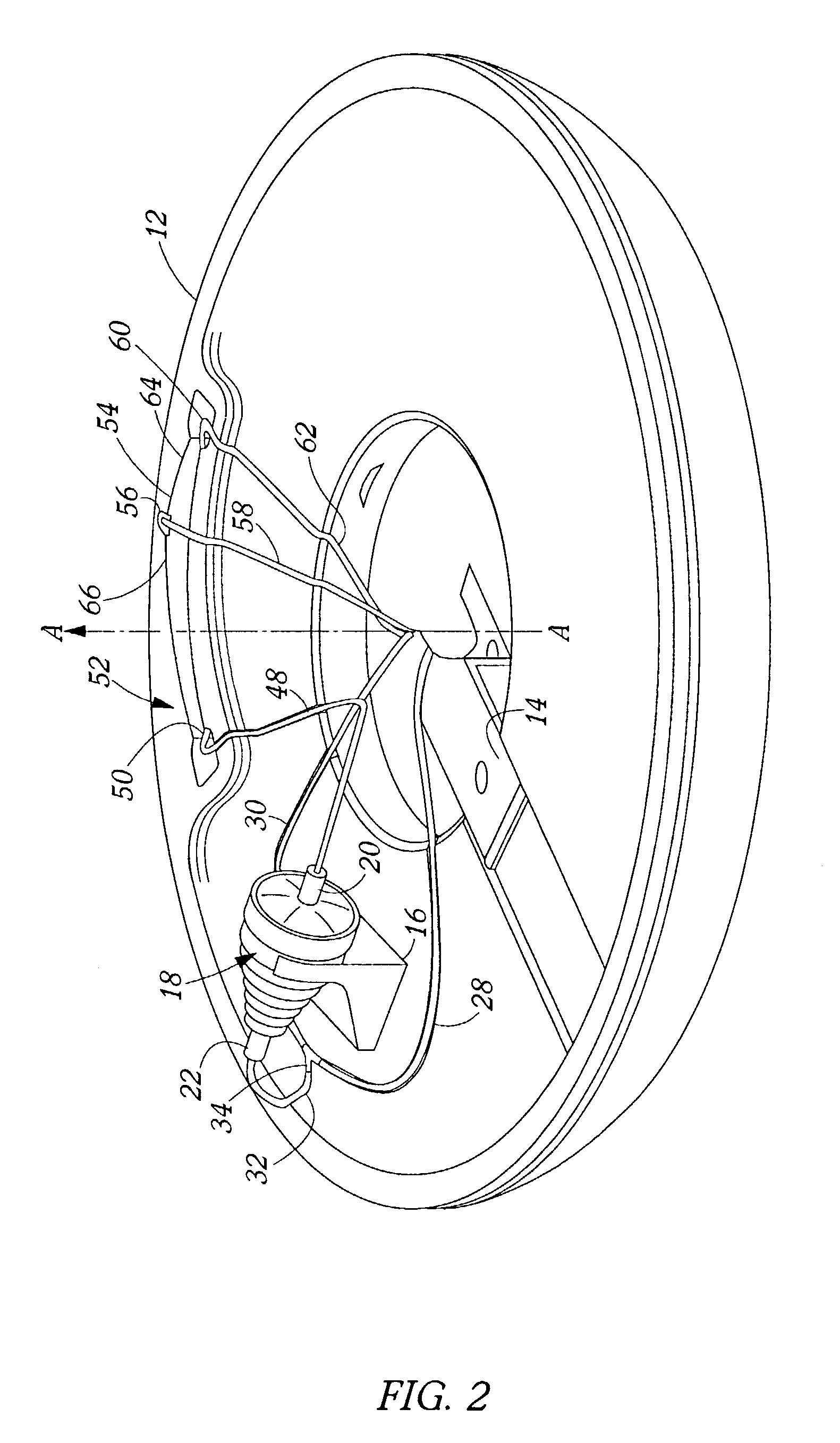Methods and apparatus for separation of particles
a particle and apparatus technology, applied in the field of system and method for separating particles, can solve the problems of many centrifugal separation processes not being able to produce a highly purified end product non-ideal cell separation, etc., and achieves the effect of facilitating subsequent separation or fractionation and reducing the amount of red
- Summary
- Abstract
- Description
- Claims
- Application Information
AI Technical Summary
Benefits of technology
Problems solved by technology
Method used
Image
Examples
examples
[0089]The effectiveness of red blood cell debulking to achieve a purified or fractionated white blood cell product was evaluated in various experiments. The debulking protocol used in the experiments reported is as follows:[0090]1. Obtain the residuals from an apheresis procedure, separate and collect the white blood cells (WBC) by centrifugation, and adjust the hematocrit to 5–20%.[0091]2. Obtain a pre-product sample of this product, label it PRE, and analyze the sample (in triplicate) using a Coulter Automated Cell Counter available from Coulter Corporation, Miami, Fla.[0092]3. Calculate the volume of product required to achieve a cell load inside a separation chamber of 3.51 mL.[0093]4. Transfer the appropriate volume of product to a 150 mL transfer pack.[0094]5. Prepare diluent containing Human Serum Albumin or Hydroxyethyl Starch, transfer 50 mL to a 150 mL transfer pack, and the remainder to a second transfer pack.[0095]6. Prepare a tubing disposable set consisting of an inlet...
PUM
| Property | Measurement | Unit |
|---|---|---|
| volume | aaaaa | aaaaa |
| volume | aaaaa | aaaaa |
| flow rate | aaaaa | aaaaa |
Abstract
Description
Claims
Application Information
 Login to View More
Login to View More - R&D
- Intellectual Property
- Life Sciences
- Materials
- Tech Scout
- Unparalleled Data Quality
- Higher Quality Content
- 60% Fewer Hallucinations
Browse by: Latest US Patents, China's latest patents, Technical Efficacy Thesaurus, Application Domain, Technology Topic, Popular Technical Reports.
© 2025 PatSnap. All rights reserved.Legal|Privacy policy|Modern Slavery Act Transparency Statement|Sitemap|About US| Contact US: help@patsnap.com



